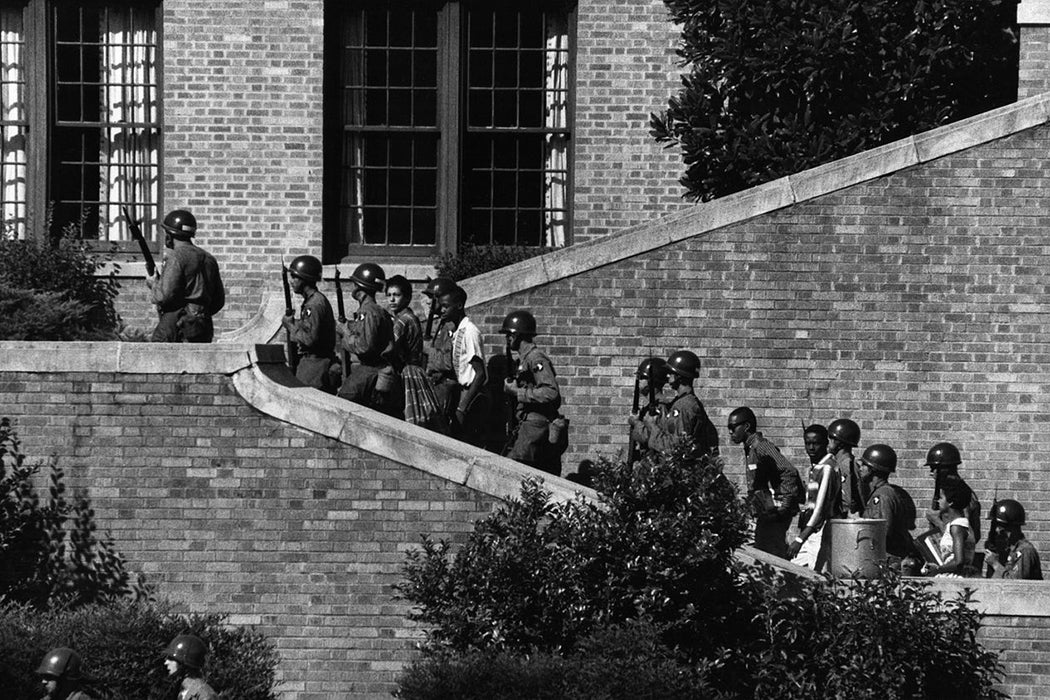In 1957 Central High School in Little Rock, Arkansas became the scene of one of the most dramatic clashes of the civil rights era, when nine African American students enrolled in the school despite the state’s refusal to obey the federal law on integration.
In response to the Brown vs. Board of Education decision, which highlighted the widespread educational inequality in schools designated for African American students, the federal government ordered that schools across the country be desegregated. Many states, particularly in the South, refused to obey and many residents threatened violence in response. Interestingly enough, Little Rock was considered a “relatively progressive, upper-south” city, with moderate leanings on the issue of integration. It was one of the first southern communities to respond to the new law and begin making plans for integration, and in the 1957 school board elections for the city, strong white supremacist candidates were overwhelmingly defeated by more moderate ones.
Still, the Superintendent of Schools, Virgil T. Blossom, seemed more interested in tokenism than in true integration. Though he did instate a multi-phase de-segregation plan in 1955, a rigid screening process and transfer provisions assured that, for the most part, segregation would still be upheld in the city. Whether by intention or neglect, he failed to foster public support for the process among the more influential community members. Instead, those who opposed integration, such as the Capital Citizen’s Council and the Mothers’ League of Central High School, took over the public discourse.
When the day came to integrate Central High School the opposition had reached mob proportions. The Little Rock police department refused to escort the incoming black students and Arkansas governor Orval Faubus, even called in the National Guard to keep them out. Violence was only avoided through an intervention by President Eisenhower, who recalled the National Guard and instead sent federal troops to uphold the law, escorting the children aged 14 to 17 into school under armed guard. Orval shut down all high schools in Little Rock for a year in response, but eventually the law prevailed, though the children continued to endure abuse at the hands of many of their classmates and even some teachers for many years after.
Segregation and inequality are still major issues in Little Rock today. Though the laws that held the institution in place have been repealed, corrupt housing policies and the creation of expensive, predominantly white, private schools have kept many of those structures in place. Residential restrictions that divided the city during the time of the Little Rock 9 became even further entrenched with the construction of the I-630 highway, which stands as a physical line that still divides the city into two unequal halves.







